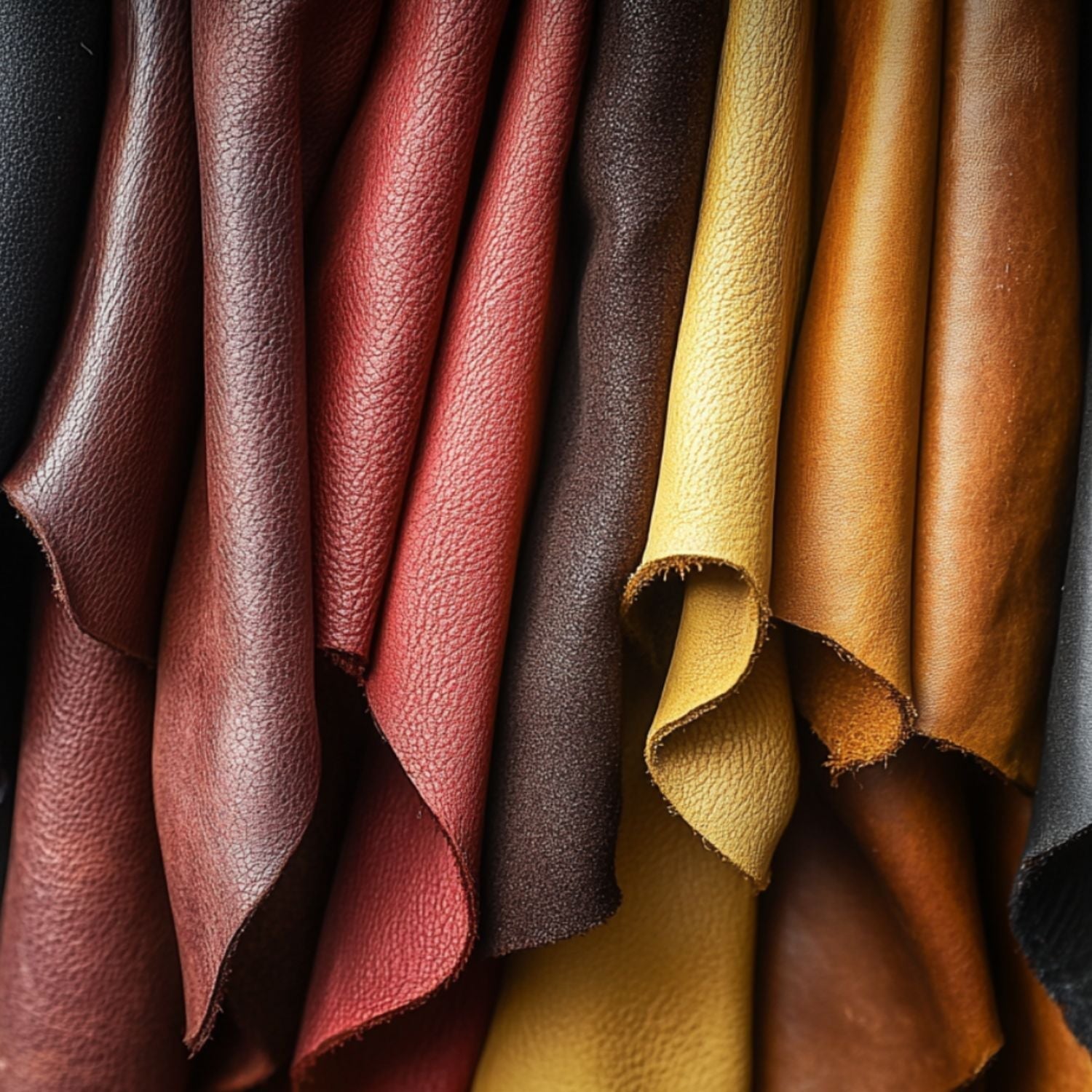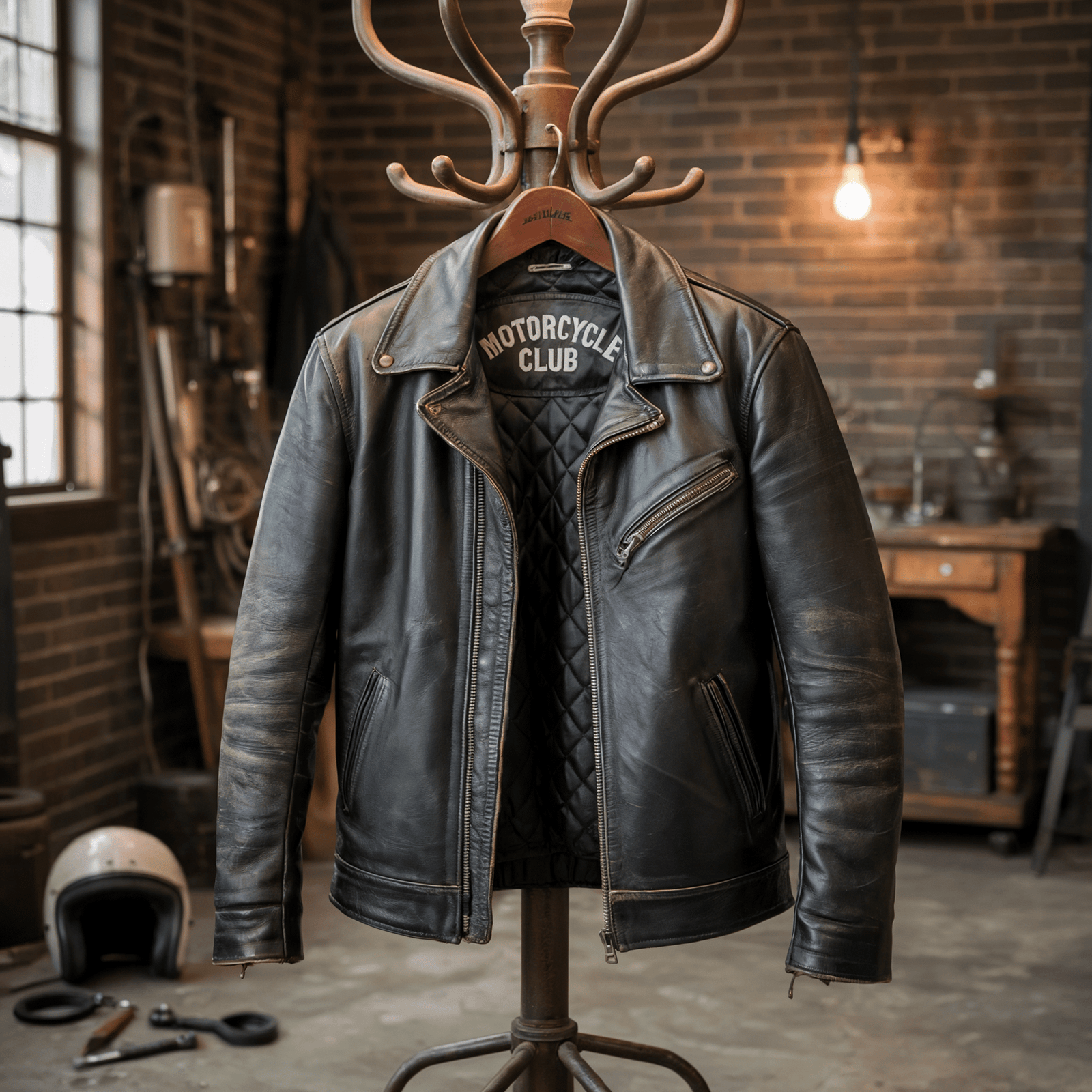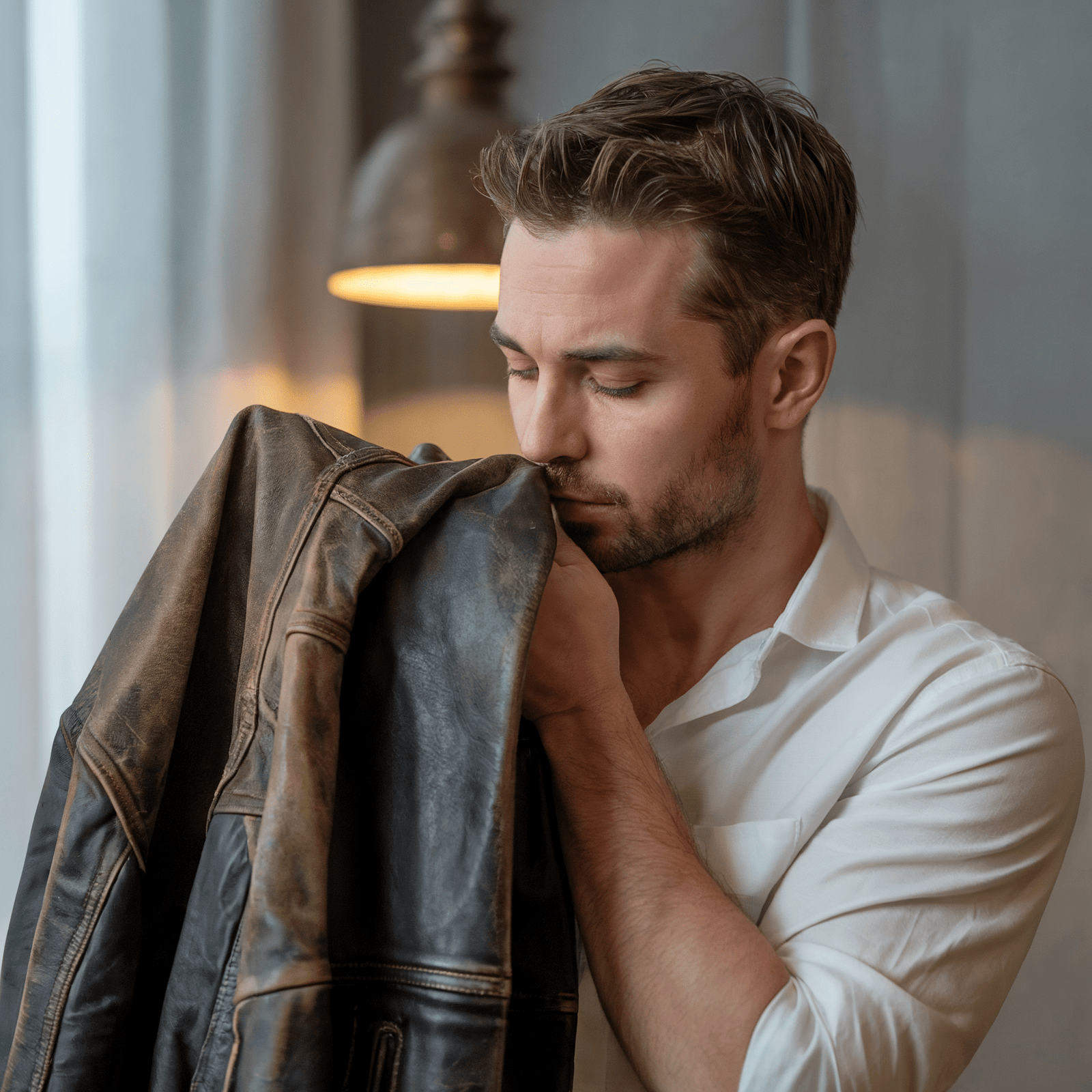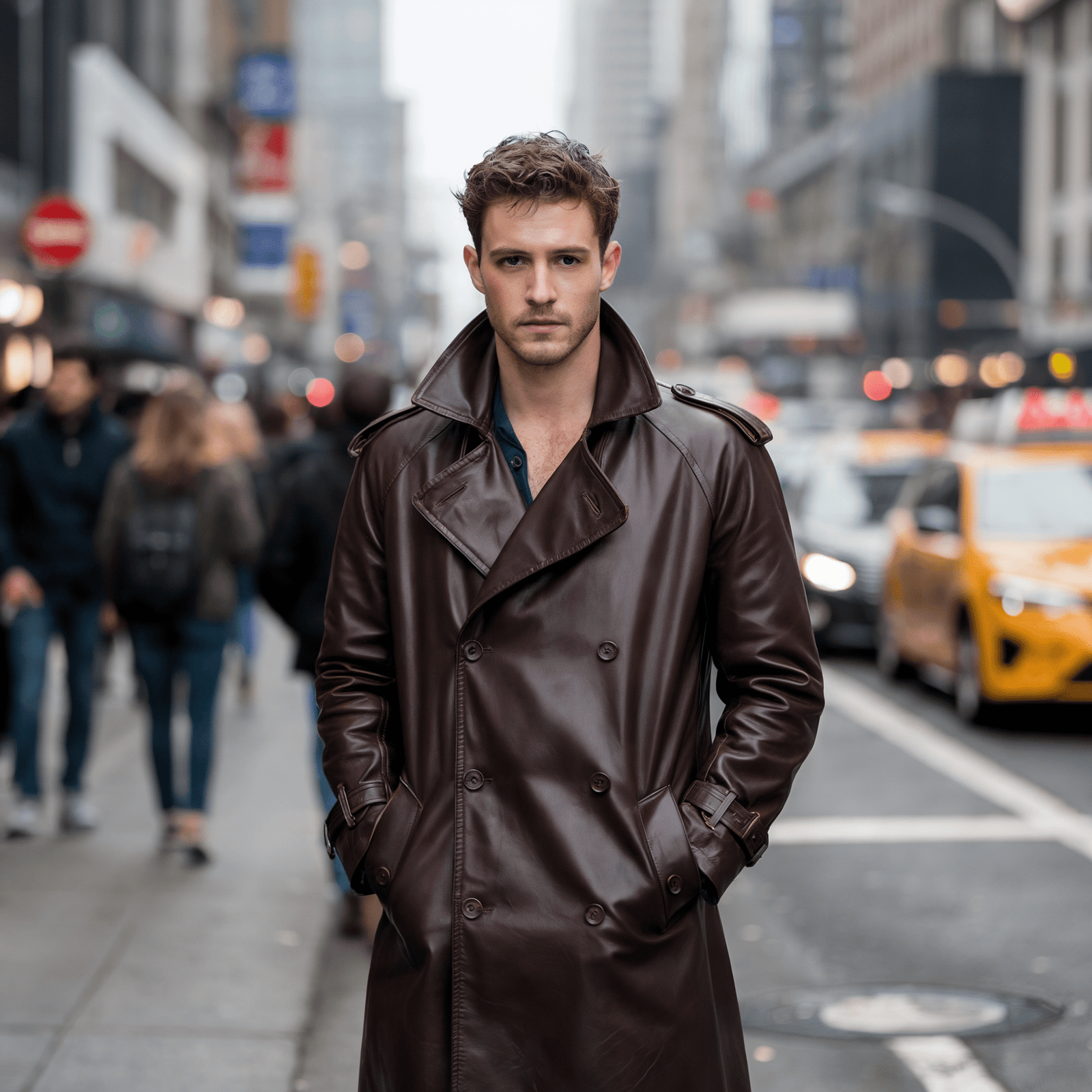Your Cart is Empty
HAPPY HOLIDAYS! SALE 10% OFF - USE COUPON HOLIDAYS AT CHECKOUT NOW!
Menu

HAPPY HOLIDAYS! SALE 10% OFF - USE COUPON HOLIDAYS AT CHECKOUT NOW!

How is Leather Dyed? A Complete Guide to Leather Dyeing Techniques and Tips
by Jennifer Smith February 27, 2025 5 min read
Key Takeaways:
- Leather dyeing involves different methods like aniline, pigment, drum, hand, and spray dyeing, each offering unique finishes.
- For best results, apply the dye in thin, even coats, let each layer dry, buff between applications, and seal with a top coat to protect the color.
- Proper care keeps dyed leather looking fresh.
When choosing a product made of leather, we have an array of options, ranging from different types, textures, finishes, and colors. Perhaps this versatility makes leather a highly sought-after material.
But what exactly goes behind those stunning pieces of leather material that ultimately become our favorite jacket or bag? The secret lies in the art of leather dyeing. Whether you are customizing a jacket, reviving an old leather bag, or just curious about the process, this guide breaks it all down in a way that’s easy to understand and fun to explore.
What is Leather Dyeing?
Leather dyeing is the process of adding color to leather using oil, water or alcohol based dyes or pigments. Dyes penetrate the leather fibers, creating rich, natural hues, while pigments coat the surface, offering uniform color and durability. The dyeing method used depends on the type of leather and the desired look, as different techniques are required for different leather textures.
Besides aesthetics, dyeing can also serve functional purposes. Manufacturers may add some weather resistance and UV protection to the leather, making sure your investment in a quality leather piece lasts a long while.
At Leather Skin Shop, you will find a broad selection of dyes, finishes, color tones, and styles to personalize your leather jacket.
Want a vintage, weathered effect? Go for aniline dyeing. Need a tough, even finish for daily wear? The pigment dyeing method is your best bet.
Does the Leather Tanning Method Impact the Final Color?
While leather tanning does influence the initial color (e.g., dark brown for vegetable-tanned leather, bluish-grey for chrome-tanned, white for synthetic or aldehyde-tanned), the final color is achieved through the dyeing process. Leather can be dyed into virtually any color, regardless of the tanning method, making it a highly versatile material for various applications.
How is Leather Dyed? The Step-by-Step Process
Dyeing leather is not just about adding color. It’s in fact, a careful process to ensure the color lasts, does not rub off anywhere, and looks flawless. Here’s how it’s done:
Step 1: Preparing the Leather
Before dyeing, the leather must be prepped to make sure the color will absorb properly. This includes cleaning and hydrating. Firstly, the dust, oils, and old finishes are removed using a leather cleaner or rubbing alcohol. After that, a light coat of water or leather conditioner is applied to open the pores for better dye absorption.
Step 2: Applying the Dye
Now comes the fun part. Coloring the leather!
Using a sponge, cotton cloth, brush, or sprayer, the dye is applied in thin, even layers. Working in one direction is advised to prevent streaks. Each coat dries before applying the next to build up the color gradually.
Step 3: Drying the Leather
The leather dye should be left to air dry completely (typically 24 hours). During the drying process, the leather craftsmen occasionally flex the leather to prevent stiffness.
Step 4: Sealing and Finishing
A top coat (wax, acrylic, or oil-based finish) is applied to lock in the color and add protection. In the end, the surface is buffed for a smooth, polished look.
Leather Dyeing Techniques
Different dyeing methods are used depending on the leather type and the desired finish. Here are the most common leather coloring techniques:
- Aniline Dyeing: With aniline dyeing, leather is soaked into barrels of water-soluble dyes. The transparent dyes penetrate the leather deeply, highlighting the natural textures and imperfections of the hide. Aniline dip dyeing is ideal for high-quality full grain cowhide leather.
- Pigment Dyeing: With a pigmented leather finish, opaque pigments sit on the surface, creating an even, durable color. Great for top grain high quality leather.
- Drum Dyeing: Leather is tumbled in a rotating drum filled with natural dyes, ensuring thorough color penetration. Common for large-scale dyeing of suede and split-grain leather.
- Hand Dyeing:A manual technique for dyeing, perfect for custom pieces, offering artistic, one-of-a-kind results.
- Spray Dyeing:Dye is sprayed onto the leather for quick, even coverage, ideal for large areas. It is used for top-grain leather or lower-quality leather which cannot be dyed using other rigorous techniques.
Tips for Dyeing Leather
Dyeing leather can be tricky, but these tips will help you master the process:
- Choose the right dye:Pick the dye according to the leather quality and your needs. Alcohol based leather dye or oil dye lasts longer, while water-based dyes are eco-friendly.
- Test before applying:Always test the dye on a hidden area first. You don’t want to waste time completing the procedure of dyeing your leather accessories or clothing if the result is not what you desire.
- Work in a ventilated space:Some dyes have strong fumes.
- Wear gloves:Avoid staining your hands with the strong liquid dye.
- Apply in layers:Thin, even coats ensure smooth coverage and lasting color.
- Buff between coats:This helps remove residue of excess dye, and even out the color.
- Seal the dye:A top coat protects against fading and wear.
How to Care for Dyed Leather
Once your leather is dyed, proper care of the product will keep it looking fresh and vibrant:
- Clean regularly:Wipe with a damp cloth to remove dirt and oils.
- Condition the leather: Use a good quality leather conditioner to prevent drying and cracking.
- Avoid prolonged sunlight: UV rays can fade colors over time.
FAQs
How Can I Pick A Dye For Leather?
You can choose a dye based on the leather type and desired finish. Oil-based dyes are durable, while water-based dyes are eco-friendly. Make sure you read the manufacturer’s instructions before application.
Does Leather Get Dyed?
Yes, leather is often dyed to add color and enhance its appearance.
How To Dye Leather Evenly And Smoothly?
To apply the dye evenly, apply thin coats in one direction. Let each coat dry, and buff between layers.
How Is Dyed Leather Finished?
A top coat (like wax or acrylic) is applied to seal the dye and protect the leather surface.
What Type Of Dye Is Best For Leather?
Oil-based dyes are best for durability, while water-based dyes are great for eco-conscious projects.
Can Leather Be Dyed In A Lighter Color?
Yes, but while it's not impossible to lighten leather, it's a more complex process than simply applying a lighter dye.
How Long Does Leather Dye Dry?
It usually takes 24 hours for dyed leather to dry completely.
Can You Dye Leather That Has Already Been Dyed?
Yes, we can dye an already dyed leather piece, but the original color may affect the final result. Strip old finishes for better outcomes.
Can You Re-Dye Leather?
Yes. Clean the leather, remove old finishes, and follow the dyeing process.
Can You Stain Leather?
Yes, staining is similar to dyeing but often refers to natural or translucent finishes.
How To Re-Dye Leather?
To re-dye leather, clean it, strip old finishes, and apply the new dye in thin, even coats.
Conclusion
Leather dyeing is a fascinating process that transforms raw hides into vibrant, stylish and long lasting products. Whether you’re refreshing an old piece or creating something new, understanding the techniques and tips will help you achieve the best results. So, grab your dye, follow the steps, and give your leather a fresh, colorful makeover!
Leave a comment
Comments will be approved before showing up.
Also in Blog | Leather Skin Shop

Types of Sleeves in a Leather Jacket
by Jennifer Smith August 24, 2025 6 min read
The different types of sleeves shape the shoulder, control the movement, and change how the leather jacket looks in motion. There are various types of sleeves, such as cap sleeves, bell sleeves, raglan sleeves, and more.

How to Get Smell Out of Leather Jacket?
by Jennifer Smith August 08, 2025 4 min read
Over time, a leather jacket can smell like sweat, mildew, or smoke. But do not worry, there are safe, proven ways to get rid of those unpleasant smells at home.

What Is A Trench Coat
by Jennifer Smith August 02, 2025 6 min read
A trench coat is a long, lightweight outerwear piece designed to protect against wind and rain. Its defining features include a double-breasted front, a belted waist, wide lapels, and often epaulets and a storm flap.
Leather Jackets for Men
Leather Jackets for Women
Accessories for Men & Women
Recent Articles
- Types of Sleeves in a Leather Jacket
- How to Get Smell Out of Leather Jacket?
- What Is A Trench Coat
- What Is A Peacoat Jacket?
- What is Polyester Fabric?
- What is Satin Fabric?
- What is Shearling Leather?
- Varsity Jacket Or Letterman Jacket? Everything You Need To Know Before Buying
- What is Semi Aniline Leather?
- What Is Cotton Fabric?
Size Chart
